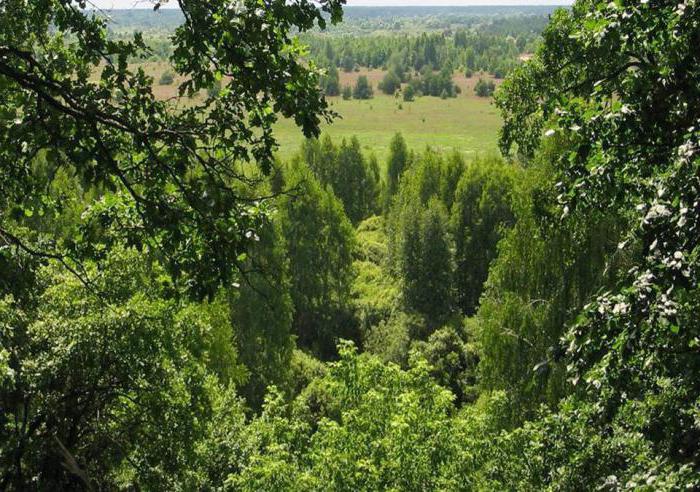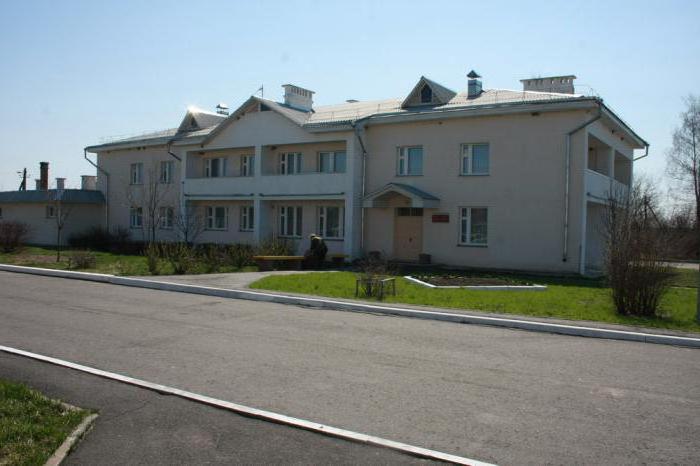In our article we want to talk about the Polessky Radiation and Ecological Reserve. The disaster at the Chernobyl nuclear power plant at one time had a great impact on both people and the surrounding land. Owing to it, this conservation zone was created in Belarus.
History of the reserve
Polessky Radiation and Ecological Reserve was organized on the territory of the most affected lands. These are the Khoiniki, Narovlyansky and Bragin districts of the Gomel region. These are lands that are part of the thirty-kilometer exclusion zone of the Chernobyl nuclear power plant. The Council of Ministers of the BSSR in July 1988 issued an order to create a conservation area in the territory exceeding one hundred forty-two thousand hectares in area. The Polessky Radiation-Ecological Reserve (founded in September 1988) began to function almost immediately.

And a year later he was renamed and got its current name. In 1992, by decree of the Council of Ministers, lands beyond the radius of the infamous 30-kilometer zone were attached to it, since these places were contaminated with radiation. So the land increased in size to two hundred and fifteen thousand hectares. And at present, the Polessky Radiation and Ecological Reserve, whose area is 216,093 hectares, is functioning and fulfilling the tasks assigned to it. Which ones - we will discuss further. So, we invite you to a virtual walk.
Polessky radiation-ecological reserve: the purpose of education
Let's start with the background. It was created, first of all, in order to prevent the spread of dangerous radionuclides beyond the boundaries of the exclusion zone, to conduct radiobiological studies, to study the state of flora and fauna under the influence of radiation, to monitor the ecological and radiation state of the contaminated area. The reserve is now located in the department of the Chernobyl Consequences Management Department.
In general, employees face a number of tasks, including:
1. Prevent the spread of radiation to less affected areas.
2. Protect forests and former agricultural land from fires.
3. Protect the protected area.
4. Ensure the natural existence of wildlife.
5. Track the level of radioactivity.
6. Conduct research on a number of pressing issues.
7. To carry out work on planting forests on those lands that are most susceptible to water and wind erosion.
8. Develop technologies for the restoration and use of land contaminated by radiation.
What is in the reserve?
Of course, the territories from which people were resettled have undergone significant changes. The degradation of former farmland, land reclamation systems, roads. Re-swamped land. This is due to the maintenance of flooded peatlands.
Where the Polessky Radiation and Ecological Reserve is located, ideal conditions have been created for the restoration of the animal and plant world, since there is no human influence at all. More than forty species of mammals, seventy species of birds, twenty-five species of fish live in it. Most of the inhabitants of the fauna of those places are either rare specimens or endangered species. And in the conditions of the conservation zone, there is a restoration of their numbers.
Now in the Polessky Radiation and Ecological Reserve the fire-fighting arrangement of the territory is completed, which includes the equipment of clearings, ponds, roads, observation towers.
On the lands of the reserve there are as many as ninety-two non-residential settlements, in which more than twenty-two thousand people once lived.
Where is the reserve located?
Polessky Radiation and Ecological Reserve is located in the south-east of Belarus. From west to east, its length is about seventy kilometers, and from south to north - forty-eight. All lands belong to the territory of the Gomel region. The southern part of the reserve adjoins the state border of Ukraine.
The center (administrative part) is located in Khoiniki. Exact address: Gomel region, 247618, city of Khoiniki, Tereshkova street, 7.
Pollution of the reserve
Polesie State Radiation Ecological Reserve is characterized by a high level of radiation. Almost thirty percent of cesium 137, which fell on the territory of Belarus, was concentrated here, not to mention strontium and transuranic elements.
Despite the fact that many years have passed since the Chernobyl disaster, the lands of the reserve can not again go into the economic turnover of the country. The fact is that transuranic radionuclides are very persistent, their pollution will not be neutralized even after a millennium. Therefore, unfortunately, these lands are almost forever lost. And one of the main goals of organizing the facility under consideration is to protect people from radiation from contaminated soils.
Polessky Radiation and Ecological Reserve: security regime, institution structure
The reserve consists of several structural units. And the territory is divided into three sections and sixteen forestries.
In general, the Polessky Radiation and Ecological Reserve is a fairly large institution. It employs more than seven hundred people. Of course, forestry and protection departments are one of the main. The forestry division is engaged in forestry, construction, restoration. He was also charged with the duties of protecting the territories, controlling unauthorized intrusions, as well as combating poaching and regulating the number of harmful animals.
It is for this purpose that the Polessky State Radiation-Ecological Reserve was created. The security regime for him is a priority. That is why much attention is paid to this issue. However, this in no way interferes with the implementation of other goals.
Scientific building of the reserve
One of the divisions of the reserve is its, so to speak, scientific part. She began to form in the early nineties. Located in the village of Babich and consists of three scientific departments, a laboratory of spectrometry and radiological chemistry. Employees are studying the dynamics of the situation in natural complexes in the thirty-kilometer exclusion zone. Studies are underway on the processes of accumulation of radioactive substances by both flora and fauna, the state of nature under pollution conditions is assessed, and radiation monitoring is mandatory.

In 2005, several buildings were reconstructed in the village of Babich. A laboratory was installed in one of them, which is equipped with modern devices. Later, the sanitary-housing building was commissioned, which facilitated the living conditions of the employees themselves. All of them work in the reserve on a shift basis. It so happened that a scientific city was formed with its own dining room, laboratory and even a boiler room.
Lands of Polessky Reserve
Polessky radiation-ecological reserve (photos are presented in the article) occupies vast territories. These are mainly lowland areas of a very swampy plain. Climatic conditions are characteristic of the temperate continental type. Air temperature (average annual) is 7.9 degrees Celsius.
The river Pripyat crosses the territory from the northwestern part of the reserve to the southeast. Its channel is very winding and has many arms (length - over 120 km). The river has a wide floodplain, in some places reaching nine kilometers, with many elders, as well as floodplain lakes (more than 300).
As for the exclusion zone, it is crossed by several small rivers: Zhelon, Rozhava, Nesvich, Vit, Bragin, as well as the Grubchansky, Pogonyansky, Kozhushkovsky canals. There are also very large massifs of swamps, such as Grubchansky and Radinsko-Nezhikhovsky.
Land Reclamation
Polesie radiation-ecological reserve is characterized by significant land reclamation (about 35%). When people lived here, a ramified reclamation system was created. Later it was no longer necessary, the entire population was taken out, respectively, and the channels were blocked and were not maintained in working condition. In addition, it was necessary to stop the discharge of water from the infected areas. All this led to the process of bogging going.
The hydrological regime is caused by groundwater, groundwater and floods. This contributes to the entry of radionuclides into aquifers.
Forests and vegetation of the reserve
Polessky State Radiation and Ecological Reserve is located in the zone of deciduous and pine forests. More than fifty percent of the land is covered with tree plantations. These are pine forests, and birch groves, and black alder forests, oak groves. The vegetation of forested lands is very diverse, there are many ferns.
According to the staff of the institution, the flora has about 1251 species of plants, which is two-thirds of the total species diversity of the plant world of Belarus. Twenty-nine of them are very rare copies that are recorded in the Red Book. Among them are: steppe aster, large mollusk, shade sedge, helmeted fritillary, water chestnut, long-pollen cape, armerious cloves, intermediate sundew, erucosaceous godson.
There are even plants that were first found in Belarus only on protected lands. This is creeping cramming, young Russian, meadowsweet steppe. The diversity of flora and fauna is due to the fact that local lands are very boggy.
Fauna of protected areas
The reserve includes fifty-four species of mammals and more than one hundred and twenty species of nesting birds. Twenty-five subspecies of fish inhabit the reservoirs.
Among all representatives of the fauna, forty-three are recorded in the Red Book. They are protected by the International Convention. I would like to draw attention to the fact that of the rare animals there lives a brown bear, lynx, badger and bison. The first bear was recorded in the reserve in 1992, and later proved the existence of five more individuals. In general, more than eighty bears live on the lands of Belarus.
The world of birds is no less rich and diverse. Among the rare and protected species, it is worth emphasizing the presence of a black stork and golden eagle, a white-tailed eagle (about 15 pairs).
Belarusian scientists are actively working on the resettlement and multiplication of rare species of animals and birds. So, for example, the number of bison from 1996 to 2007 increased from sixteen individuals to fifty-four.
Such successes can only please. The reserve even created a museum of fauna. In its exposition visitors are presented stuffed birds that live in this territory, a collection of insects and other equally interesting exhibits.
Educational work in the reserve
I would like to note that the reserve, in addition to scientific work, is also engaged in educational activities. Students attend it en masse. In real field conditions, they can get acquainted with the flora and fauna, learn how to take environmental samples in practice, conduct experiments and analyze the level of soil contamination with radionuclides , etc. Such classes provide much more knowledge than the theory taught in classrooms without the formation of practical skills. .
Instead of an afterword
Polessky State Radiation and Ecological Reserve (the description was presented above) is an amazing corner of Belarus. If you have a chance, by all means visit this region. Yes, this is a closed territory, but there are safe places where tourists are allowed. Since any activity here is prohibited, visitors had a truly unique opportunity to contemplate nature in its original, untouched form. And this is just imagine! - In the centre of Europe.